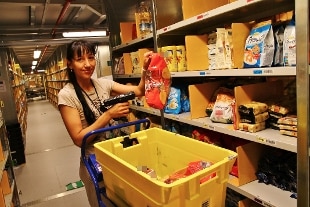- After 5 months of growth, the employment rate fell: -0.1% in July, Istat reports
- Istat: industry, orders totaled -0.9% in June, -4.8% on an annual basis
- Istat: consumer and business confidence falls in August
- Istat, the downward trend has been interrupted: the economy is improving slightly
- Istat: "zero growth" GDP for the second quarter of 2019
- Istat, unemployment drops to its lowest level since 2012: 9.7%
Share
06 September 2019The online commerce is accelerating, with an increase of 23.2 percentage points which says a lot about new consumer habits. Overall, in July 2019, Istat estimates a 0.5% decrease in value and 0.7% in volume for retail sales. Sales of foodstuffs (-0.1% in value and -0.5% in volume) are down, as well as non-food sales (-0.7% in value and volume). As for the sales of non-food goods, positive trend variations were recorded for all product groups. The largest increases concern IT equipment, telecommunications, telephony (+ 6.4%) and footwear, leather goods and travel items (+ 6.1%). Compared to July 2018, the value of retail sales increased by 3.3% for large retailers, driven by food discount stores (+ 7.2%) and by 0.9% for companies operating on small surfaces. In comparison, the 0.9% increase in companies operating on small surfaces, such as neighborhood stores, seems small, but represents a discontinuity with the previous months downwards.Comparison In the May-July quarter, compared to the previous quarter, retail sales increased by 0.5% both in value and in volume. Sales of foodstuffs (+ 0.7% in value and + 0.5% in volume) are increasing, as are non-food products (+ 0.3% in value and + 0.4% in volume). On an annual basis, retail sales recorded a 2.6% increase in value and 2.8% in volume. Sales of food goods are up (+ 3.2% in value and + 2.4% in volume), as well as non-food goods (+ 2.1% in value and + 3.1% in volume) .
Istat's comment
"The limited downturn in the month of July follows the largest increase recorded in June 2019. In July 2019, the trend growth in the value of retail sales is accelerating compared to that recorded in the previous month and is widespread for all size classes of moreover, the growth is more intense for larger companies (with at least 50 employees) which show an increase of 4.3%, while a smaller increase characterizes both companies with up to 5 employees (+ 0.9%), and those with 6 to 49 employees (+ 1%). If we consider the trend in sales value since the beginning of the year, the growth only affects large companies (+ 2.2%), which also include the main digital platforms, while for the others recorded decreases of different intensity (-1.2% for companies with up to 5 employees and -0.1% for those with 6 to 49 employees) ".
Bankruptcy balances
"Italy in recession. Consumption has fallen compared to June. The beginning of the balances should have made the sales of non-food items soar compared to the previous month. Instead they fall by 0.7%". Thus stated Massimiliano Dona, president of the National Union of Consumers, commenting on the data released today by Istat. "The balances prove to be a failure. The discreet performance of footwear, + 6.1% on an annual basis, is completely insufficient to raise overall sales, also because clothing remains at stake, registering a paltry + 1.5% , placing itself only in seventh position compared to the classification of non-food product groups, "continues Dona. "In short, the Italians are so in crisis that they don't even buy when there are discounts. If we add to this, compared to the pre-crisis values of July 2008, if the total sales are 4.4% lower, those of the small ones stores still show a loss of 15.6%, the picture of the country's difficulties is even more evident ", concludes Dona.
Stagnation
The Italian economy remains characterized by the continuation of a phase of stagnation: in the second quarter the gross domestic product (GDP), in concatenated values with reference year 2010, adjusted for calendar effects and seasonally adjusted, remained at the same levels as the three months earlier. The Istat notes it in its monthly note. The weakness of production rates, adds Istat, was also reflected in the labor market, leading to the interruption of the growth of work units and hours worked that had characterized the previous months. Consumer inflation showed a slight recovery, but remained at low levels. The inflationary gap in favor of Italy compared to the euro countries has narrowed slightly. In August, the confidence climate index showed a deterioration for both consumers and businesses. The recent deterioration and the high instability of the economic situation have been reflected in the trend of the leading indicator which marked a large decline, suggesting the continuation of the weak phase of economic activity levels. The employment prospects for the coming months indicate a continuation of the moderation phase. In the second quarter, the vacancy rate, which measures the number of personnel searches by companies, remained stable compared to the previous quarter. In August, the opinions of entrepreneurs referring to employment expectations showed a slight deterioration. This is what emerges from the monthly note on the performance of the Italian economy by ISTAT.

